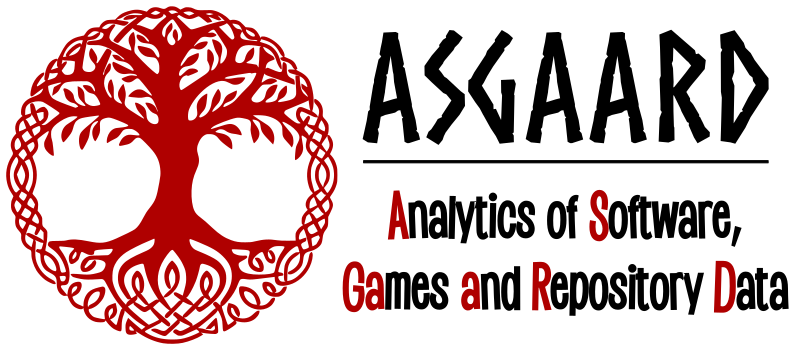( = Paper PDF,
= Paper PDF,  = Presentation slides,
= Presentation slides, ![]() = Presentation video)
= Presentation video)
1.
Hao Li; Cor-Paul Bezemer; Ahmed E. Hassan
Software Engineering and Foundation Models: Insights from Industry Blogs Using a Jury of Foundation Models Inproceedings
International Conference on Software Engineering - Software Engineering in Practice (ICSE - SEIP) Track, 2025.
Abstract | BibTeX | Tags: FM4SE, Foundation models, SE4AI, SE4FM, SE4ML
@inproceedings{Li_SEFM_blogs,
title = {Software Engineering and Foundation Models: Insights from Industry Blogs Using a Jury of Foundation Models},
author = {Hao Li and Cor-Paul Bezemer and Ahmed E. Hassan},
year = {2025},
date = {2025-04-27},
booktitle = {International Conference on Software Engineering - Software Engineering in Practice (ICSE - SEIP) Track},
abstract = {Foundation models (FMs) such as large language
models (LLMs) have significantly impacted many fields, including
software engineering (SE). The interaction between SE and FMs
has led to the integration of FMs into SE practices (FM4SE)
and the application of SE methodologies to FMs (SE4FM). While
several literature surveys exist on academic contributions to these
trends, we are the first to provide a practitioner’s view. We
analyze 155 FM4SE and 997 SE4FM blog posts from leading
technology companies, leveraging an FM-powered surveying
approach to systematically label and summarize the discussed
activities and tasks. We observed that while code generation is the
most prominent FM4SE task, FMs are leveraged for many other
SE activities such as code understanding, summarization, and
API recommendation. The majority of blog posts on SE4FM are
about model deployment & operation, and system architecture
& orchestration. Although the emphasis is on cloud deployments,
there is a growing interest in compressing FMs and deploying
them on smaller devices such as edge or mobile devices. We
outline eight future research directions inspired by our gained
insights, aiming to bridge the gap between academic findings
and real-world applications. Our study not only enriches the
body of knowledge on practical applications of FM4SE and
SE4FM but also demonstrates the utility of FMs as a powerful
and efficient approach in conducting literature surveys within
technical and grey literature domains. Our dataset, results, code
and used prompts can be found in our online replication package
at https://zenodo.org/records/14563992.},
keywords = {FM4SE, Foundation models, SE4AI, SE4FM, SE4ML},
pubstate = {published},
tppubtype = {inproceedings}
}
Foundation models (FMs) such as large language
models (LLMs) have significantly impacted many fields, including
software engineering (SE). The interaction between SE and FMs
has led to the integration of FMs into SE practices (FM4SE)
and the application of SE methodologies to FMs (SE4FM). While
several literature surveys exist on academic contributions to these
trends, we are the first to provide a practitioner’s view. We
analyze 155 FM4SE and 997 SE4FM blog posts from leading
technology companies, leveraging an FM-powered surveying
approach to systematically label and summarize the discussed
activities and tasks. We observed that while code generation is the
most prominent FM4SE task, FMs are leveraged for many other
SE activities such as code understanding, summarization, and
API recommendation. The majority of blog posts on SE4FM are
about model deployment & operation, and system architecture
& orchestration. Although the emphasis is on cloud deployments,
there is a growing interest in compressing FMs and deploying
them on smaller devices such as edge or mobile devices. We
outline eight future research directions inspired by our gained
insights, aiming to bridge the gap between academic findings
and real-world applications. Our study not only enriches the
body of knowledge on practical applications of FM4SE and
SE4FM but also demonstrates the utility of FMs as a powerful
and efficient approach in conducting literature surveys within
technical and grey literature domains. Our dataset, results, code
and used prompts can be found in our online replication package
at https://zenodo.org/records/14563992.
models (LLMs) have significantly impacted many fields, including
software engineering (SE). The interaction between SE and FMs
has led to the integration of FMs into SE practices (FM4SE)
and the application of SE methodologies to FMs (SE4FM). While
several literature surveys exist on academic contributions to these
trends, we are the first to provide a practitioner’s view. We
analyze 155 FM4SE and 997 SE4FM blog posts from leading
technology companies, leveraging an FM-powered surveying
approach to systematically label and summarize the discussed
activities and tasks. We observed that while code generation is the
most prominent FM4SE task, FMs are leveraged for many other
SE activities such as code understanding, summarization, and
API recommendation. The majority of blog posts on SE4FM are
about model deployment & operation, and system architecture
& orchestration. Although the emphasis is on cloud deployments,
there is a growing interest in compressing FMs and deploying
them on smaller devices such as edge or mobile devices. We
outline eight future research directions inspired by our gained
insights, aiming to bridge the gap between academic findings
and real-world applications. Our study not only enriches the
body of knowledge on practical applications of FM4SE and
SE4FM but also demonstrates the utility of FMs as a powerful
and efficient approach in conducting literature surveys within
technical and grey literature domains. Our dataset, results, code
and used prompts can be found in our online replication package
at https://zenodo.org/records/14563992.

